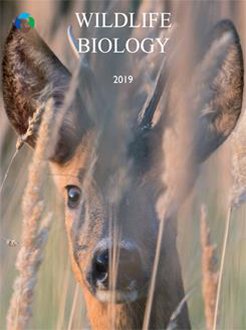Hunting, including drive hunts, can be considered as a predation process. Although drive hunts are spatially and temporally well defined, the scale at which the hunting risk triggers anti-predator responses of prey remains poorly documented. The present study aims at 1) characterizing the delayed movement responses of female red deer Cervus elaphus to hunters and 2) understanding the main environmental determinants modulating these post-disturbance responses at the individual level. We hypothesized that red deer alter their movement behaviour for several days after a drive hunt by increasing their speed and exploring more space. Then, we predicted that individuals close to the hunting area would exhibit stronger responses (i.e. higher speed and larger home range size) than individuals located further away. We also expected topographic obstacles and vegetation cover to reduce the magnitude of the post-disturbance responses. We used GPS data from a large dataset collected on 91 female red deer in the National Hunting and Wildlife Reserve of La Petite Pierre (France), between 2004 and 2018. Each year, drive hunts are conducted by about 43 hunters and 6 dogs, once a week from October to February. Our results suggest that, over a 72-h period after a drive hunt, female red deer could show two contrasting strategies: 1) flight-type movements (i.e. higher maximum speed) associated with more space explored due to a temporary avoidance of the disturbed area and 2) lower movements to avoid detection and contacts with hunters. These two delayed responses are situation-specific, depending on risk proximity, landscape features, hunting conditions and individual characteristics. This study highlights that ungulate management using a ‘hunting for fear’ approach may be adjusted considering spatial and temporal scales of the effects of drive hunts on red deer movement patterns.
How to translate text using browser tools
19 April 2019
Proximity to the risk and landscape features modulate female red deer movement patterns over several days after drive hunts
Agathe Chassagneux,
Clément Calenge,
Vivien Siat,
Philippe Mortz,
Eric Baubet,
Sonia Saïd

Wildlife Biology
Vol. 2019 • No. 1
2019
Vol. 2019 • No. 1
2019
delayed anti-predator responses
hunting
non-lethal effects
space use





